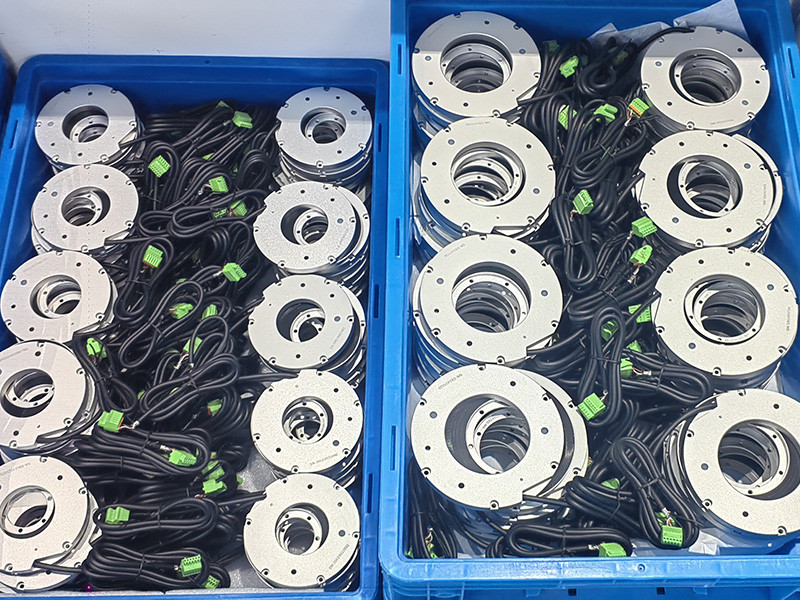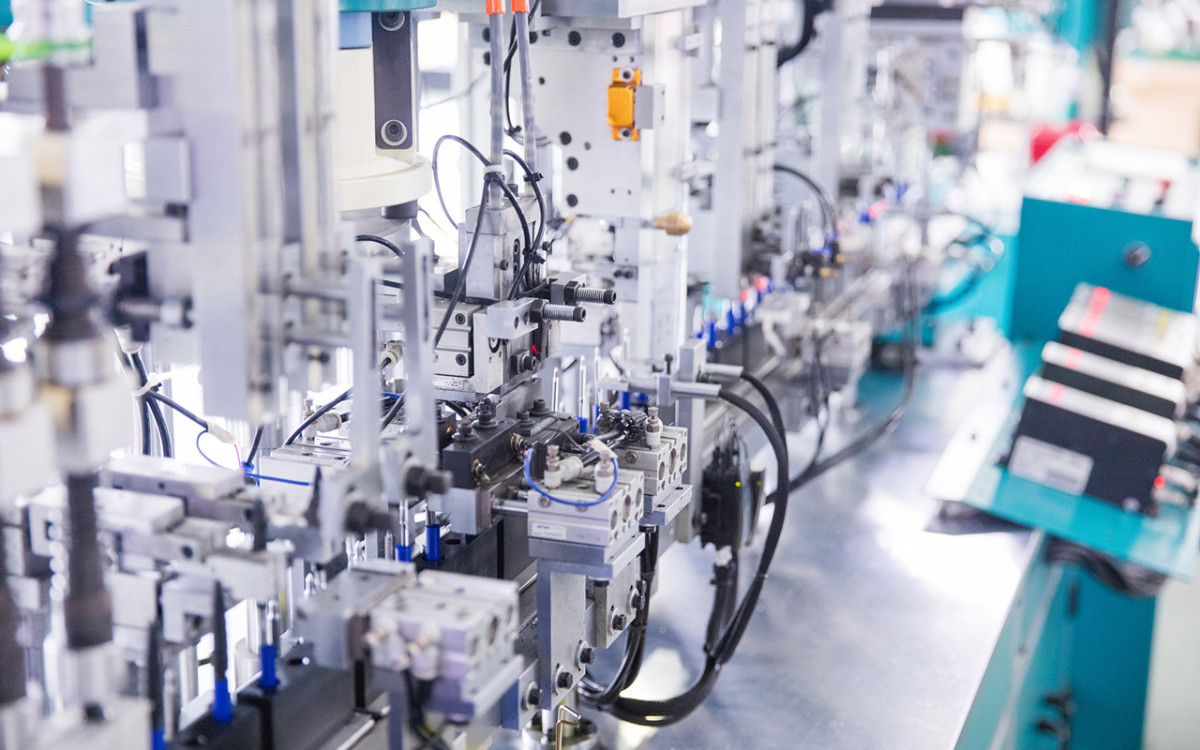In the dynamic landscape of automation and precision engineering, accurate measurement solutions are essential. From servo encoders to advanced time-grid technology, the methods used to measure angles and linear displacement have evolved significantly. This blog delves into key concepts, applications, and technologies that drive precision measurement in various industries.
Servo Encoder
Servo encoder is critical components in closed-loop control systems, providing precise feedback on the position, velocity, and direction of a motor. By converting the rotational position of the motor shaft into an electrical signal, these encoders enable accurate control of motion, making them indispensable in robotics, CNC machines, and industrial automation.
There are two primary types of servo encoders: incremental and absolute. Incremental encoders provide relative position information, while absolute encoders give a unique position value for every angle of rotation. This distinction is crucial in applications where power loss may occur, ensuring that systems can quickly resume accurate operation without recalibration.
Recent developments in servo encoder technology include the integration of artificial intelligence and machine learning algorithms. These innovations allow for predictive maintenance by analyzing historical data and detecting anomalies in real-time. This capability not only enhances operational efficiency but also reduces downtime, leading to significant cost savings in manufacturing environments.

Applications of Servo Encoders:
Robotics: In robotic systems, servo encoders enable precise control of joint movements, ensuring accurate positioning for tasks such as assembly, welding, and material handling.
CNC Machines: Servo encoders are vital in CNC (Computer Numerical Control) machinery, allowing for high-precision cutting, drilling, and milling processes.
Industrial Automation: In manufacturing environments, servo encoders help control conveyor systems, robotic arms, and other automated equipment, enhancing productivity and efficiency.Aerospace and Automotive: Servo encoders play a crucial role in the aerospace and automotive industries, providing accurate position feedback for flight control systems and vehicle dynamics.
Medical Devices: In medical applications, servo encoders are used in equipment such as surgical robots and imaging devices, where precision is critical for patient safety and treatment efficacy.
Angle Measurement Solution
Angle measurement solution is vital in many applications, from automotive manufacturing to aerospace engineering. Various technologies, including optical, magnetic, and capacitive sensors, are employed to measure angles with high precision. These angle measurement solutions allow engineers to achieve optimal alignment, ensuring that machinery operates efficiently and effectively.
With advancements in digital technology, angle measurement solutions now offer enhanced features such as increased resolution, faster response times, and improved robustness. The integration of smart sensors that can communicate with central control systems further enhances their utility, enabling remote monitoring and adjustments that were previously cumbersome.
The future of angle measurement may involve the use of augmented reality (AR) to visualize alignment and measurement data in real-time, providing engineers with an intuitive understanding of the systems they are working on.

Time-Space Conversion
Time-space conversion refers to the process of transforming measurements taken in time intervals into spatial measurements. This technique is particularly useful in applications involving dynamic systems where position must be calculated based on time measurements. By leveraging advanced algorithms, engineers can convert time data into accurate spatial information, significantly improving the precision of measurement systems.
This approach is especially beneficial in automation and robotics, where quick and accurate positioning is crucial. Time-space conversion helps streamline operations, reduce errors, and enhance the reliability of systems that rely on rapid feedback loops. As the demand for high-speed processing increases, integrating time-space conversion with real-time data analytics will provide even greater insights into system performance.
Rotation Angle Measurement
Rotation angle measurement is essential in various applications, including robotics, automation, and industrial machinery. Technologies like rotary encoders and gyroscopes are commonly used to measure angular displacement accurately. By providing real-time data on the position and movement of rotating components, these devices help maintain precise control over machinery.
High-performance rotation angle measurement systems can offer sub-degree accuracy, making them suitable for applications requiring meticulous precision. Furthermore, as industries push for miniaturization and energy efficiency, the development of ultra-compact rotation measurement devices that consume less power while delivering high performance will be a game-changer.
Linear Measurement Equipment
Linear measurement equipment is crucial for applications requiring precise distance measurements. Devices such as laser distance meters, linear encoders, and tape measures ensure accurate measurements in various settings, from manufacturing to construction. These tools allow for efficient and reliable measurements, enhancing productivity and quality control.
With advancements in technology, linear measurement equipment has become more sophisticated, offering features such as wireless connectivity, digital readouts, and increased measurement ranges. Innovations like 3D laser scanning and drone-based measurement systems are transforming how measurements are taken, providing faster and more comprehensive data collection.
Rotation Measurement Equipment
Rotation measurement equipment encompasses various devices designed to monitor and assess the rotational position and speed of components. Examples include rotary encoders, tachometers, and gyroscopes. These instruments provide critical data for maintaining the performance and safety of rotating machinery.
With the rise of automation, the demand for reliable rotation measurement equipment has grown. Modern devices offer enhanced features such as high resolution, robustness against environmental factors, and compatibility with digital systems. The incorporation of IoT technology allows for real-time monitoring and data analysis, enabling predictive maintenance and optimized performance.
Time-Grid Encoder Technology Solution
Time-grid encoder technology represents a significant advancement in the field of motion control and measurement. By synchronizing time measurements with position data, time-grid encoders can provide highly accurate and real-time feedback for dynamic systems. This technology enables more precise control in applications like robotics, CNC machining, and automated assembly lines.
The ability to integrate time-grid encoder technology into existing systems enhances performance and reduces latency, allowing for smoother operation and improved accuracy. As industries increasingly rely on automation, the synergy between time-grid technology and machine learning will foster smarter systems capable of adapting to changing conditions and requirements.
Automation Encoder
Automation encoder play a vital role in modern manufacturing and industrial processes. By providing real-time position feedback, these encoders ensure that machinery operates with optimal precision. Whether using servo motors, stepper motors, or other drive systems, automation encoders help maintain accurate control over movement and positioning.
The integration of advanced technologies such as digital signal processing and high-resolution sensing has transformed automation encoders into sophisticated devices capable of meeting the demands of today’s fast-paced industries. As automation continues to evolve, the reliance on accurate measurement solutions like encoders will only increase, further driving innovations in precision engineering.
Conclusion
The advancements in measurement technologies, including servo encoders, angle measurement solutions, and time-grid encoder technology, play a crucial role in the success of modern automation and precision engineering. These innovations enhance the accuracy, efficiency, and reliability of systems across various industries, paving the way for smarter manufacturing and improved performance.
As engineers and manufacturers continue to embrace these technologies, the future of precision measurement looks promising. By investing in advanced measurement solutions, industries can optimize their operations, reduce errors, and achieve greater control over their processes, ultimately driving growth and innovation in an increasingly competitive landscape. Embracing these advancements not only positions companies for success but also fosters a culture of continuous improvement and technological evolution in the quest for excellence.
INQUIRY NOW
